It was the fourth round of fixtures in the UEFA Champions League in the group stage. On Wednesday, Red Star Belgrade played against Tottenham Hotspur at the Rajko Mitić Stadium.
Despite being the league leader with six points clear in the domestic competitions, things for Red Star did not go well in the continental competition. They only had three points before the game, and they needed more to qualify.
Tottenham’s results had been poor. Their only victory in the last six matches was the one over Red Star at home. Spurs were heavily criticized after the 1-1 draw at Goodison Park. They need to produce some positive results and improvements.
In this tactical analysis, we will show you the tactics of Red Star and Tottenham, which resulted in the Tottenham victory.
Lineups
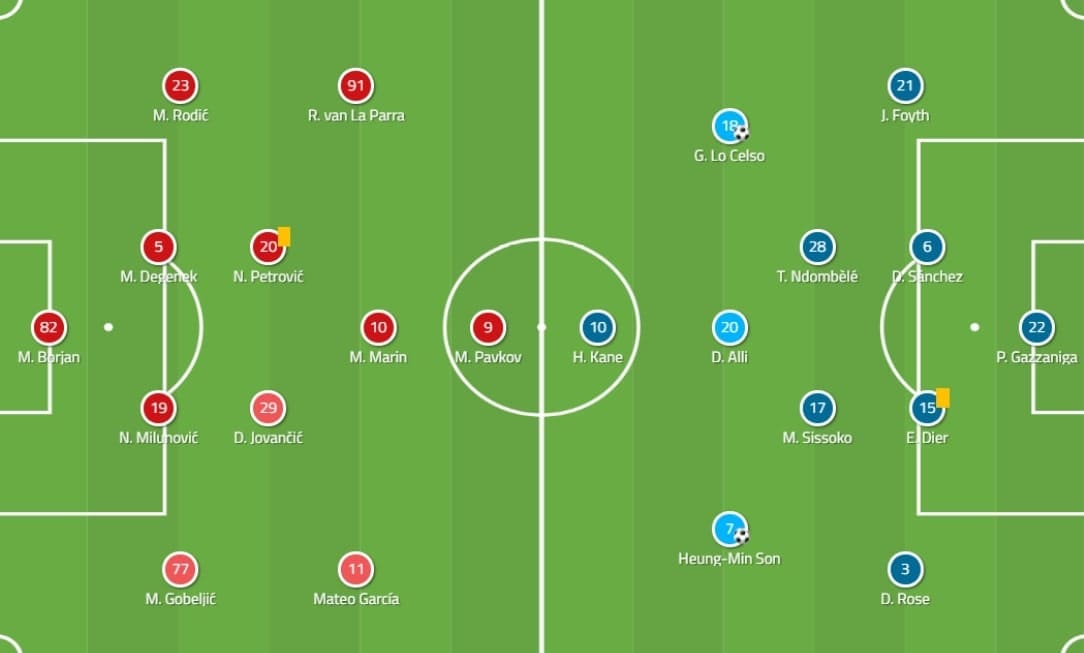
Compared to the last league game, Vladan Milojevic made some changes in his lineups. There were some familiar names, former Chelsea man Marko Marin and the new arrival from Huddersfield, Rajiv van La Parra. Miloš Degenek replaced Radovan Pankov and partnered with Nemanja Milunovic. Marko Gobeljić, Njegos Petrovic, Dusan Jovančić all returned to the squad. It was a 4-2-3-1 formation.
Mauricio Pochettino also made huge changes to the starting lineup. Some heavily criticized players like Christian Eriksen, Toby Alderweireld were all benched. It was the first start for both Argentines Juan Foyth and Giovani Lo Celso this season. Eric Dier played as a centre-half alongside with Davinson Sánchez. It was also a 4-2-3-1 formation from Tottenham.
Red Star’s defence
In this analysis, we begin with the defensive setups of the home team. Red Star was not a team that commit their players to press their opponents high. They tended to form a mid or low block to defend. However, their defensive shape was not consistent given their frequently swap of positions. Red Star intended to defend in a compact manner and commit more players to lock the ball side.
Briefly speaking, Red Star players stepped out early to press the oppositions. In most cases, their lone striker Milan Pavkov stayed at the centre of the pitch. The Serbian forward did not mark Moussa Sissoko tightly since he looked for chances to receive the clearance in the air and start an offensive transition.
The below situation showed how the Red Star block denied the ball progression of Tottenham. The home team committed players to prevent central penetrating passes towards Lo Celso and Tanguy Ndombélé. Also, they denied an overload of that area and forced Tottenham to play the ball back, reorganize the attack. The switch play of Tottenham was completed smoothly since Pavkov did not defend much.
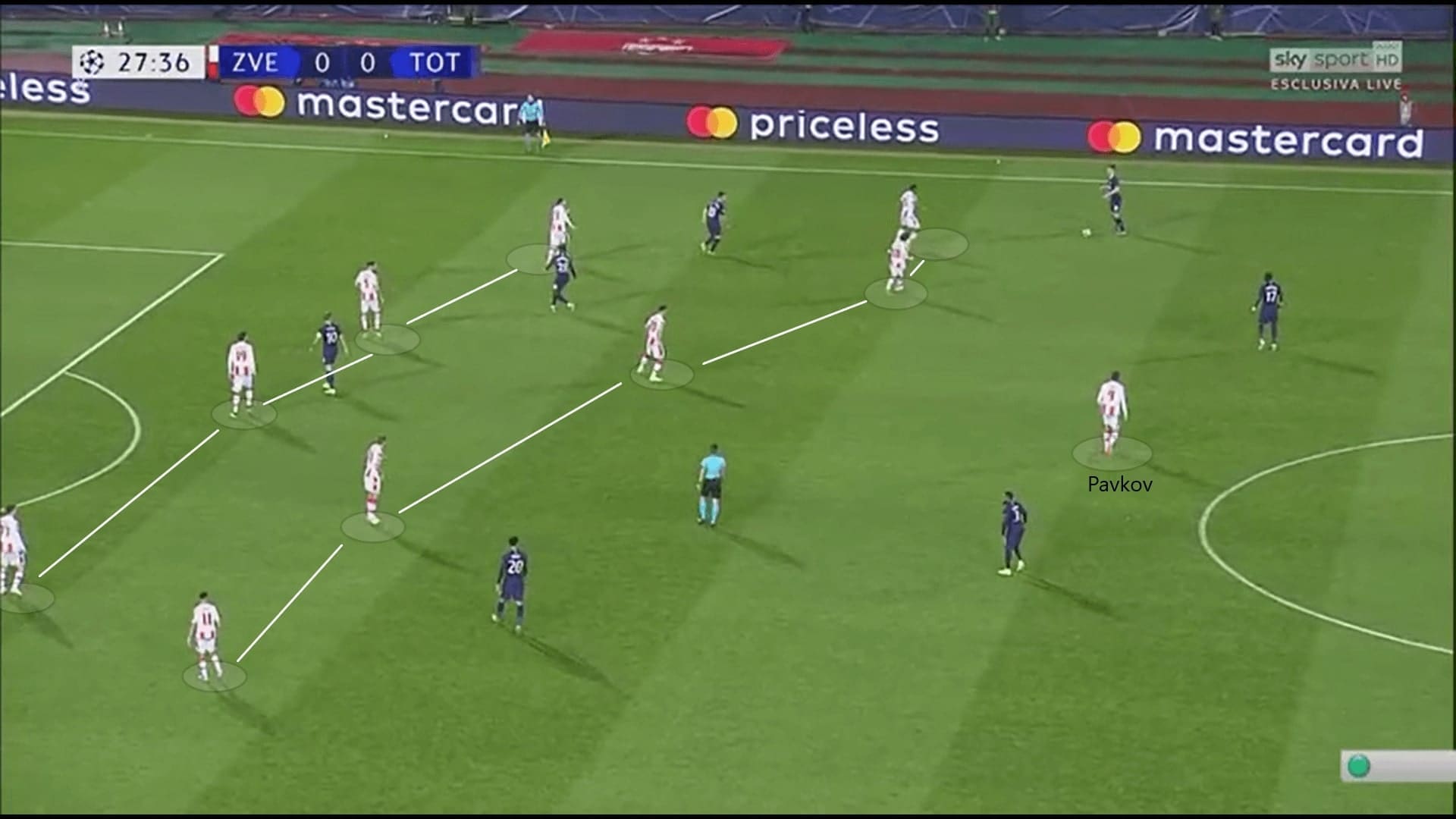
The attacking approaches of Tottenham
Now, we are going to explain the Tottenham’s build-up pattern in this match. Given the huge change of squad, the away team showed some new forms to attack.
Despite being an energetic left-back, Danny Rose did not cover the left flank and produced overlapping runs as much as he did before. The 29-year-old English player played as an inverted left-back this match. The change of his tactical role was to achieve a goal: release Ndombélé. The former Lyon midfielder enjoyed the freedom to produce forward runs and filling up spaces when Harry Kane left his position. Leaving Sissoko as the only pivot at the centre might lead to a loss of numerical advantage in that area. Therefore, the presence of Rose was important.
The below scene reflected the build-up structure of Tottenham. With the flexible positioning of Rose, Tottenham could build-up with a back three if they wished. Though playing in front of the centre-halves, Sissoko was not necessary to involve in the build-up. Instead, he positioned himself at the centre to pin Pavkov on occasions. With the relatively deep positioning off the ball by van La Parra, Tottenham could move the ball to flanks without pressure.
It was Ndombélé to drop between Sánchez and Foyth, as the right-back positioned himself in an advanced positioned while Lo Celso occupied the half-spaces.
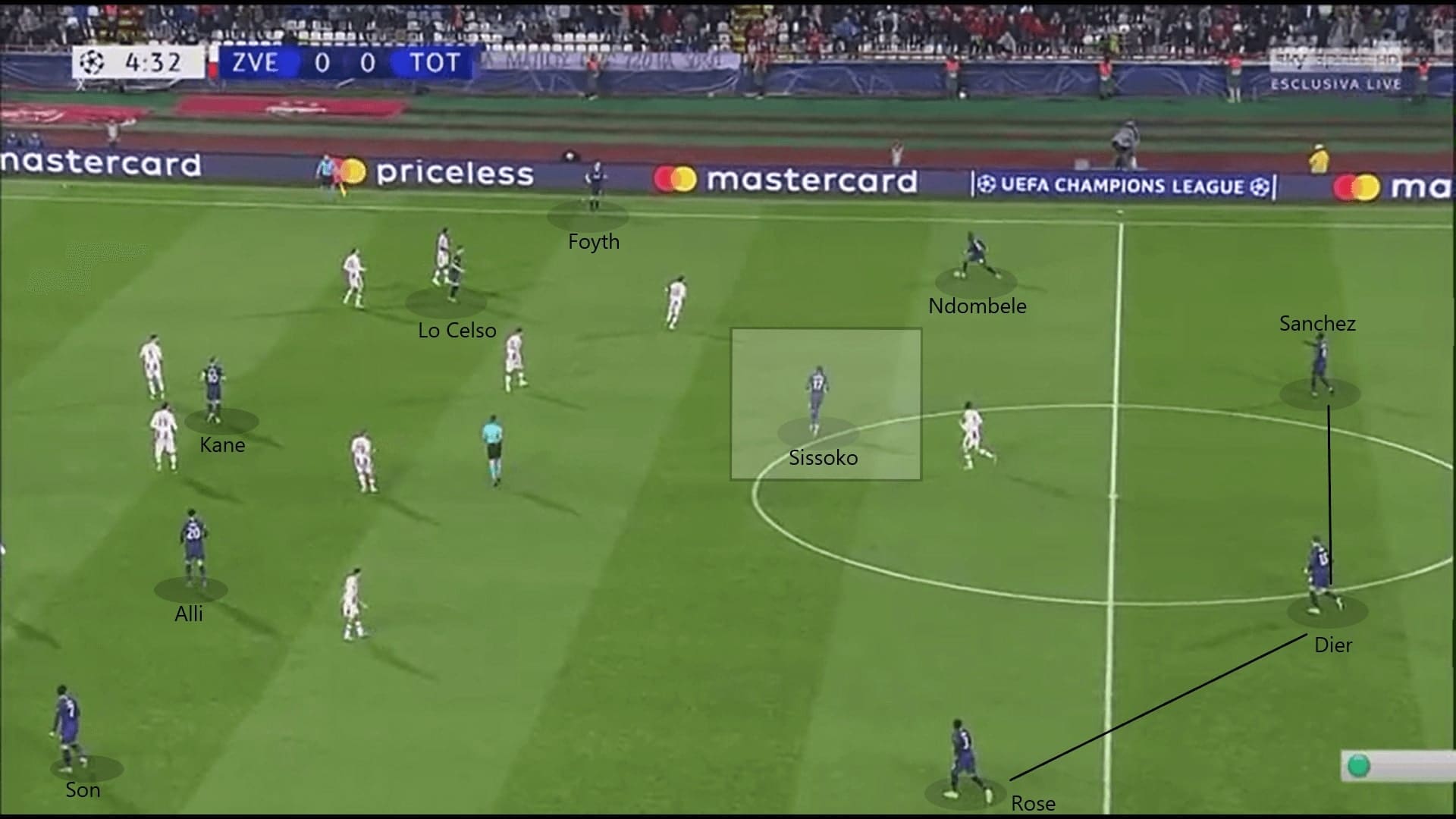
Another key point that worth noticing in Tottenham’s attack was their positional rotations. As mentioned, Kane could drop to the midfield to exploit space and provided himself as an extra man in the midfield. The English captain combined with Lo Celso and Foyth to hit the right flank.
Tottenham did quite well to fill and create the spaces, as explained below. The dropping moves of Lo Celso and Kane both pinned an opposition. Since Red Star players were used to step out early to close off Tottenham players, Milan Rodić was pulled out of position, spaces were generated behind him. With some quick plays from Kane and Lo Celso, Tottenham exploited those space and reached the final third. Ndombélé’s position was also vital, as the French filled Kane’s position and pinned opponents.
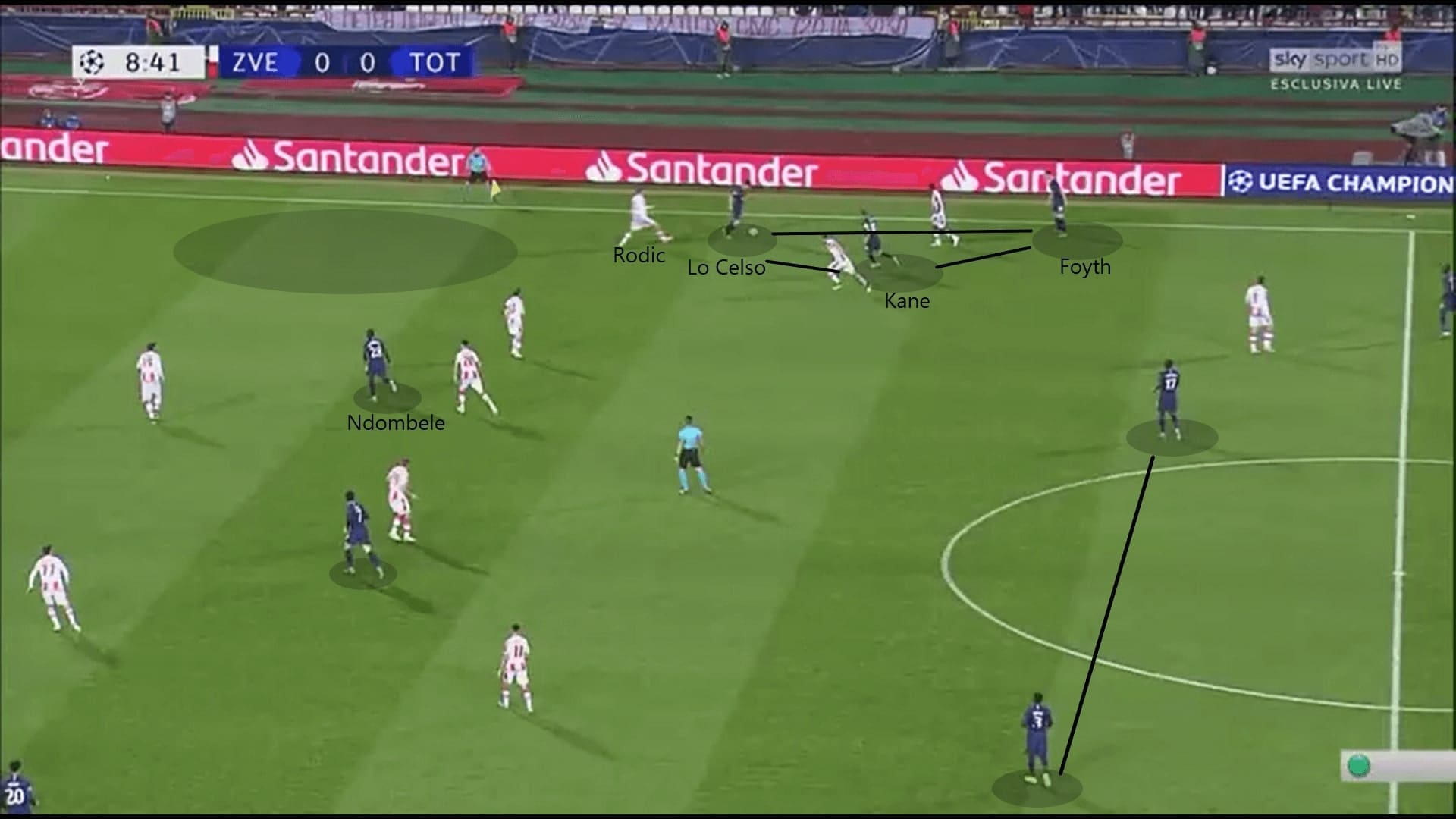
Apart from the approaches explained, Tottenham also possesses players who could play vertical passes that penetrate through the centre. Therefore, Tottenham midfielders also positioned themselves between the lines of Red Star to exploit those spaces.
The below scene was an example, which Tottenham’s passed through the centre. Dele Alli, Ndombélé stayed between the lines. Marin stepped out to close off Sissoko and forced the former Newcastle man to pass. Meanwhile, van La Parra tried to position himself wider to shorten his distance with Lo Celso. This gave space for Sissoko to pass through the gap between van La Parra and Petrovic.
Since Red Star defenders failed to read this pass and anticipate, Ndombélé turned after receiving the ball and he progressed the ball to Kane further, created a shooting chance.
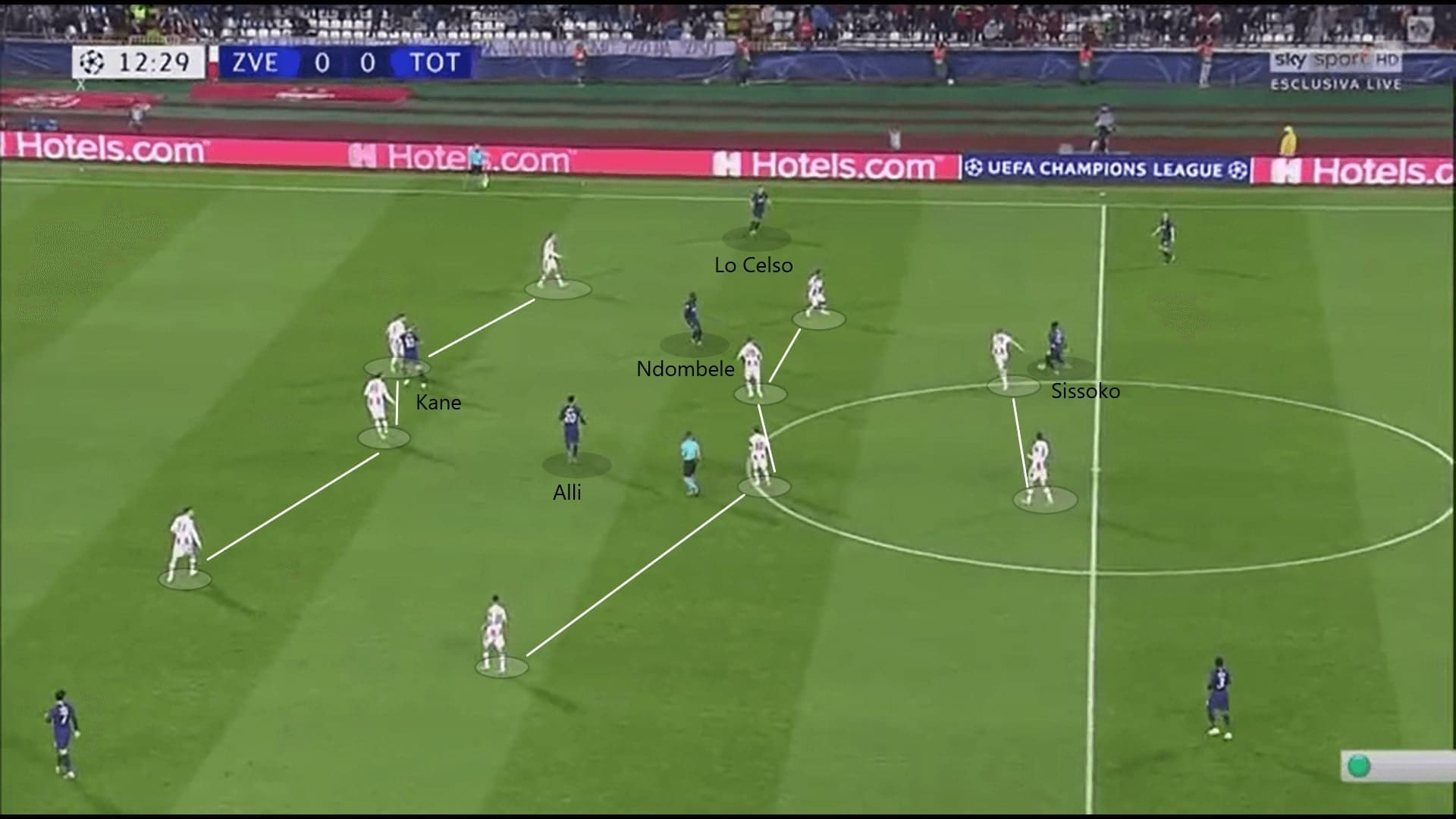
These multiple ways of Tottenham’s attack put Red Star in a dilemma. When the ball was at the centre of the pitch, they were passive to react. They stayed compact horizontally, then it left the wide areas open. They tried to anticipate a pass to the flanks, then Tottenham exploit spaces between players.
Red Star’s attack
In contrast to the well-organized build-up plays of Tottenham, Red Star relied on their lone striker, Pavkov, as a target man to start an attack. The Serbian was 1.93m tall and he recorded six successful aerial duels in this game. This figure was more than half of the entire Red Star team.
As the graph below, which highlighted all 25 occurrences of aerial duels in this game, we could get some hints. Most of these aerial duels took place at the centre of the pitch. This helped to explain the attack of Red Star, which they played long to this area, tried to find Pavkov.
However, this approach did not pose a menace to Tottenham’s defence, as the Columbian centre-half also possessed the physical strength to win the ball in the air. He won seven aerial duels this game. Meanwhile, the rest of Red Star players were not alert enough to pick second balls or receive the layoffs from Pavkov. Red Star seldom started an attack with this approach.
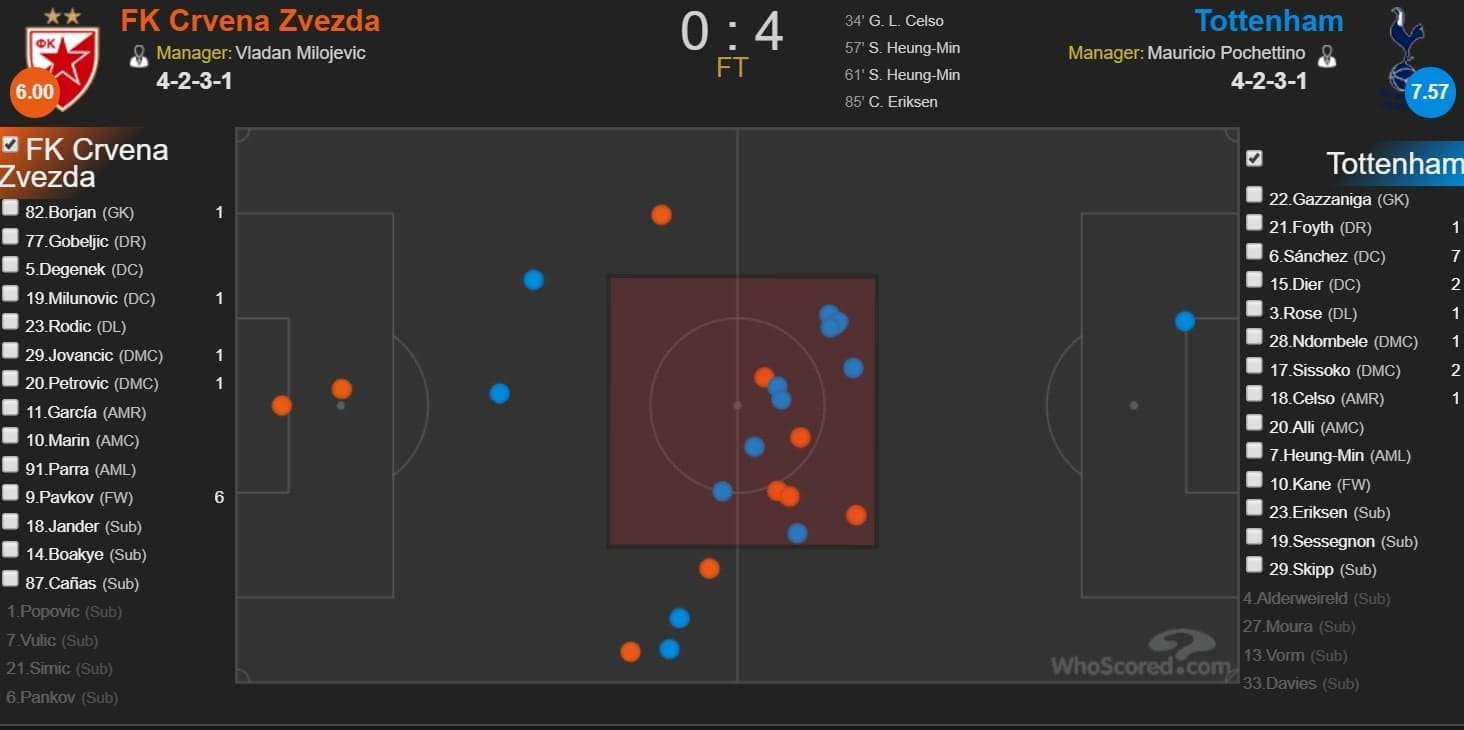
How these elements resulted in the Tottenham goals
Since Red Star were missing an organized shape to attack, they were easy to lose shape in defensive transitions as well. In this match, the home team lost the midfield battle, Tottenham capitalized on this weakness of Red Star. They found themselves easy to create chances through transitions.
As the Red Star failed to dominant the air when attacking. Pavkov was the lone striker without support. The scene below reflected this. When the 25-year-old Serbian tried to get the ball on his feet, he was quickly surrounded by several Tottenham players. None of his teammates tried to move and provide themselves as a passing option.
Unsurprisingly, Pavkov lost the ball. With four to five players around the ball, Red Star could have compressed the space and counter-press. At least, they should try to delay Tottenham’s offensive transition. They failed, and Heung-min Son scored his first goal.
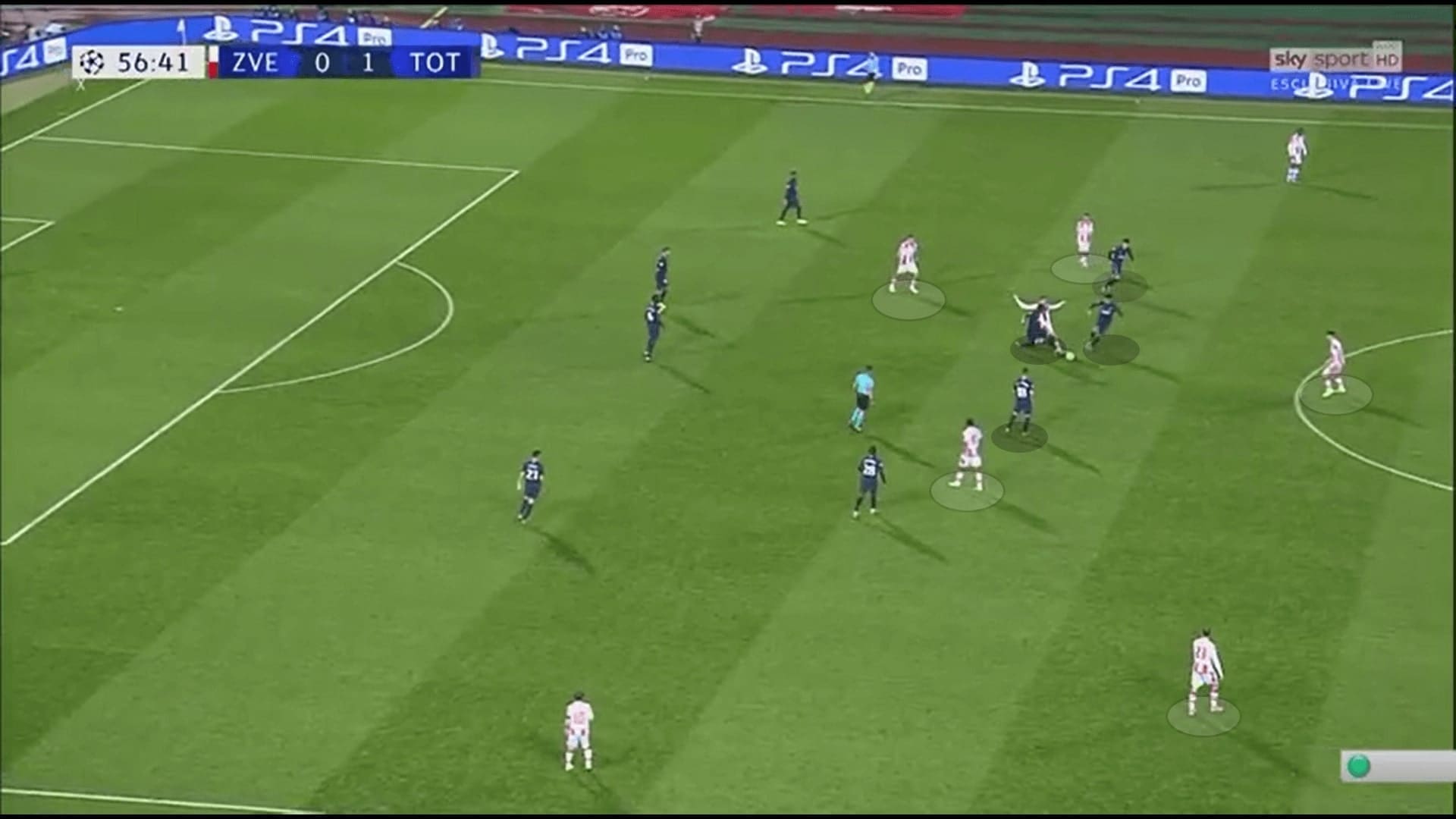
The second goal of Son could be attributed to the attacking movements of Tottenham players. Since Red Star lost shape again, it was a good chance for Tottenham to hit. Kane dropped from the striker position, so Alli ran from the left to the centre to fill the striker position. This movement brought away the substitute Jander and created spaces for Rose to exploit. Once Kane’s pass found Rose, Red Star were outnumbered in the last line of defence. Son scored an easy tap in from the cross of Rose.
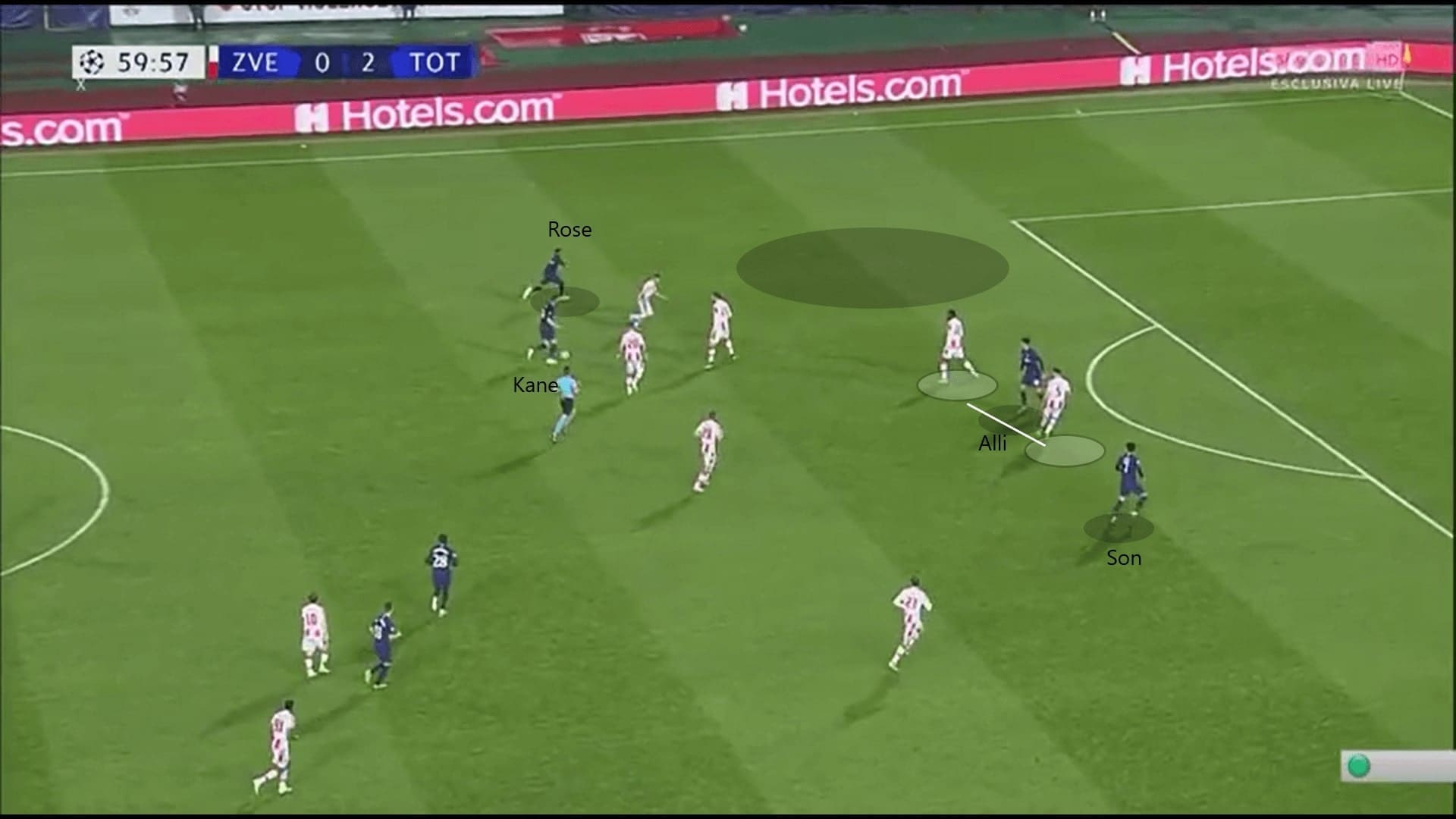
Conclusion
Despite pressed more and pushed the defensive line higher after conceded goals, Red Star did not provide a huge test for Tottenham. The defence lacked intensity while attacks were unorganized. They should improve in the games coming forward.
After the recent disappointing games, Tottenham secured a win at Serbia. They deserved this win. There were players provided sharp performance. Ndombélé showed his ability to escape opposition press in tight areas and carried the ball forward under pressure. Lo Celso was an active player, with good spatial awareness and quick movements. Of course, it was still too early to judge whether the Argentine can replace Eriksen in the long term, but he deserves more chances. They are going to play against Sheffield United at home before the international fixture.

If you love tactical analysis, then you’ll love the digital magazines from totalfootballanalysis.com – a guaranteed 100+ pages of pure tactical analysis covering topics from the Premier League, Serie A, La Liga, Bundesliga and many, many more. Buy your copy of the November issue for just ₤4.99 here





Comments